
Delmanto and Publisher Saraiva
View more [+]
Projeto – PROVER
View more [+]
INTERVIEW WITH CÁTIA FONSECA IN THE MULHERES PROGRAM - TV GAZETA
In August 2009, Aleixa presented some of her paintings and a demonstration class on the TV show WOMEN'S WOMEN alongside the presenter CÁTIA FONSECA.

Ana Luisa Rodrigues (11 years old) in the studio of the plastic artist Aleixa Oliveira, developing paintings using watercolor technique.
THE VALUE OF ART IN A CHILD'S LIFE
Art is inherent in a child's education. Because?" The visually literate student, has a wider range of reading in the world, a more sensitive and investigative look, presents more grounded criticisms, failing to become a victim of superficial knowledge, exploring topics not yet known and of enriching reflection. The more she knows about artistic productions, the more she will be able to approach a better understanding, both of the world and of the various existing cultures. When the student produces and appreciates art, he can reflect on himself, his world, his life story, exposing his ideas and feelings, making himself heard and heard.
As a teacher specializing in the art of painting with colored pencils and watercolors, I have more than one job to do, a mission: to work with each student, in what they have to be positive, to make them believe that it can be even better. The goal is also to polish the talent or help bring it to life through the art of painting with colored pencils and watercolors, making your precious value count, as you are a special human being and you have to be remarkable. Therefore, I have very rich justifications that Art goes far beyond a “relaxing class”, or a “pass-time”, through which technical / visual and contextual skills and abilities are generated, which undoubtedly collaborates in the transformation of cultural and construction of ethical and social values, fundamental to the formation of a citizen. In this sense, the school is a fundamental vehicle / medium for the development of such student learning processes, which we treat here as a social and cultural being, therefore - artistic.”
Aleixa de Oliveira

In 1997, when she was sponsored by the company Faber-Castell, Aleixa exhibited the painting "A BAILARINA" (Bárbara Schyarv) with the impressive dimensions 1.70 x 0.90 cm and totally painted using the color pencil technique on paper, in the city of Mogi das Cruzes - SP.

MOTIVATION
When I was 14 years old, my parents took me to visit an exhibition. that's when I got to know MASP (São Paulo Museum of Art). I honestly did not imagine that it would be something motivating, inspiring and decisive for my professional future.
Something transformative occurred to me, in front of all those historical and divine works of art, among them, which can be highlighted: Condedque de Olivares, de Velásquez, which caught my attention for their impressive dimensions and perfection in their lines and colors, the delicate pink painting and blue, by Renoir, and Quatro Bailarinas em Cena, by Degas - then, there was a desire in me - to study and paint the myology of a human size in natural size, with the color pencil technique on paper. Despite all this magic of artistic impressions, generated from this very special tour, only after 4 years, but still surrounded by that unforgettable inspiring atmosphere of the Museum, I painted the work - The Ballerina Bárbara Schyarv, in natural size. It was a difficult elaboration in a lasting challenge. Nine months of hard work! It was worthwhile, therefore, I understood that even in the face of difficulties, determination, discipline and believing are essential values in order to achieve something you want.
Aleixa de Oliveira
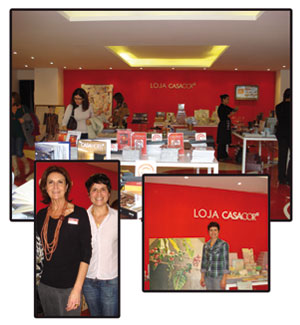
Along with the market relations director Mrs. Cristina Ferraz, Aleixa de Oliveira records one of the moments of her visit and participation with her works at CASA COR 2012 in SP.
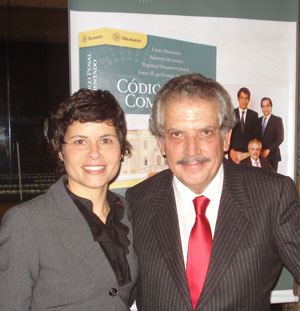
ALEIXA DE OLIVEIRA AND DR. ROBERTO DELMANTO
On June 7, 2010, Editora Saraiva launched the 8th edition of the book “Penal Code Commented” authored by renowned lawyers Dr. Celso Delmanto, Dr. Roberto Delmanto, Dr. Roberto Delmanto Jr. and Dr. Fábio Delmanto.
Plastic artist Aleixa de Oliveira took part in this important work, through her painting “Tribunal de Justiça de João Pessoa - PB”, which illustrates the cover.
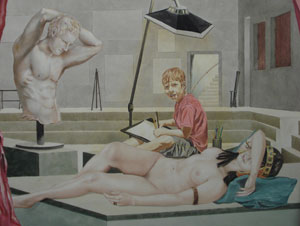
The work "The Artist" painted by Aleixa, is part of the collection of the Art Museum of the Parliament of São Paulo, where Dr. Emanuel Von Lauenstein Massarani-Critic and Superintendent of Cultural Heritage, describes the painting as shown on the website: http://www.jusbrasil.com.br
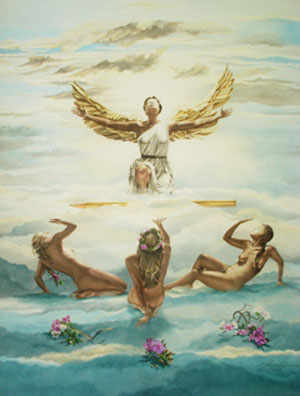
"Greek Goddesses", another work exhibited at the James Lisboa Gallery, painted by Aleixa de Oliveira.
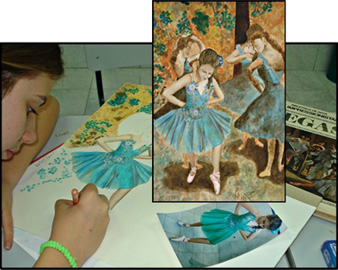
PROJECT AND EXHIBITION: ART FOR ALL

BE MORE
The work entitled - "Verdadeira Luz", elaborated by Aleixa, illustrates the cover of the magazine “Ser mais”. The subjective title refers to the special tribute to his mother - Mrs. Vera Lúcia, this name with the meaning: true light.
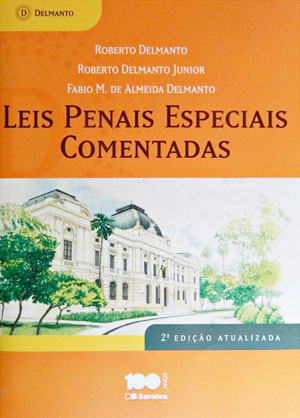
DELMANTO
In December 2013, Publisher Saraiva launched the 2nd updated edition of the book "Special Penal Laws Commented" authored by renowned lawyers, Dr. Roberto Delmanto, Dr. Roberto Delmanto Jr. and Dr. Fábio Delmanto. Plastic artist Aleixa de Oliveira took part in this important work, through her painting "Faculdade de Direito do Recife", which illustrates the cover.
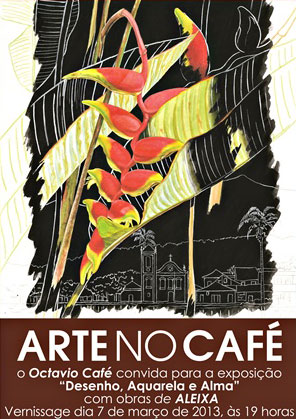
OCTAVIO CAFÉ
Between March 7 and 28, paintings from the collection “Desenho, Aquarela e Alma” by the artist Aleixa de Oliveira were exhibited at the Octavio Café. Promoted by Cristiane Quercia, one of the executive directors of Sol Panamby Organizations, and Dr. Emmanuel von Lauenstein Massarani, Project Curator, Art Critic, Writer, Journalist, Historian and Museologist. The exhibition took to the space the surprising beauty of the works done with colored pencils and Watercolor.
Some questions asked by the general public and answered by the artist.
What is your contribution in the world of technical and conceptual innovation within the visual arts?
A: Professionally, since I was 15 years old, I started to present and develop an innovative way of painting with colored pencils. Its purpose has always been and will be to transmit the maturity of this material, that is, in addition to a differentiated form of application, it is technically more precise, detailed, thus demonstrating a careful result of its real value. There is a line of thought that I tend to follow: “Being susceptible to renewals, trends, new codes ... A challenging process that enables constant improvement and, of course, I try to establish a limit so that I can maintain the peculiarity of my works.”
Aleixa, talk a little about the watercolor technique you have applied in some of your works.
A: In parallel, since 1999, I started to apply the watercolor technique in some of my works, in 2004, approximately, there was definitely an union of this technique with colored pencils, in other words, the public has often seen my works with these two techniques in a single work. This means that in addition to dedicating myself to paintings 100% made with colored pencils, there is also this option and that, fortunately, was very well accepted.
How did you discover your interest in painting?
A: I was around 7 years old, me and a classmate sat at the back of the room, almost together we finished the lesson, quickly, to start our drawings and paintings. It was really the time when I discovered my talent, we used to take superhero comics (Captain America, Superman, Batman) and, in short, we did our own rereading.
Why choose the color pencil material?
A: I believe that your visual aspect is and will always be very attractive, it is something practical, compact, I was enchanted as a child and so on. Another important reason was, at the time, lack of other painting materials. So, little by little I started applying this unique material on paper, studying it and discovering its great artistic potential.
Did you receive support from your parents?
A: Yes, it was essential.
How important is art to a child?
A: Through art, she understands why her ancestors exist alongside her history, social, psychological and political issues. It is as Heinrich Wolfflin wrote in his book - Fundamental Concepts of Art History. “Art has its spiritual aspect, it determines the general physiognomy of an era. The artist has always been governed by the demands of a time and its people ”. Here, then, why we decipher our history also through these artistic records. And besides all this, when the child is learning a technique of a certain art, he exercises observing, discriminating, analyzing, organizing, criticizing, in short, aspects of great importance for his development.
Your base school was neoclassicism, why are some of your pictorial compositions present Hyper-realism?
A: I think it is important to be contemporary, in addition to Hyper-realism, I try to absorb the necessary characteristics of Surrealism, with a Renaissance tone to put together a language of my own work. Basic education is extremely important, it has not been and will not be forgotten, I have always been inspired to make my paintings. Tintoretto, an important 17th century painter, said something that I not only agree with, but I try to apply it to my paintings: “A painting must be seen initially as a large ensemble and only later perceived in detail.”
Speaking of inspiration, in addition to the great geniuses of painting, what other reasons inspire you during the achievements of your works?
A: Love, passion, the Divine, without him, I do nothing. In addition to the emotional and spiritual, it is evident that there is a preliminary study of each work: sketches, research based on books, travel and photos / my own image bank and a lot of observation. Anyway, it is different information that I try to acquire on each chosen theme, in addition to creativity.
Is there a preferred theme?
A: Yes, I like figures - human anatomy, although I work with different themes.


